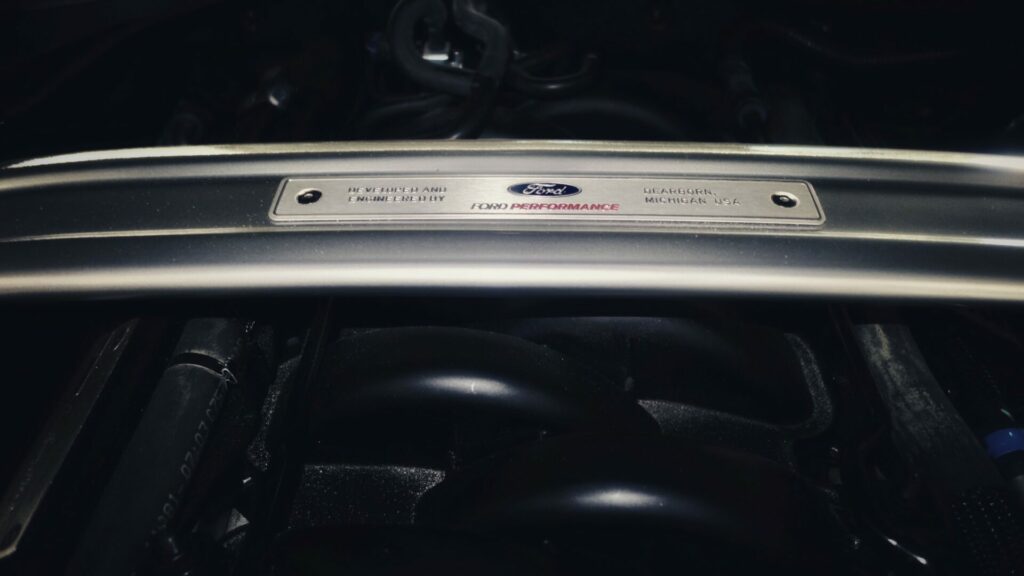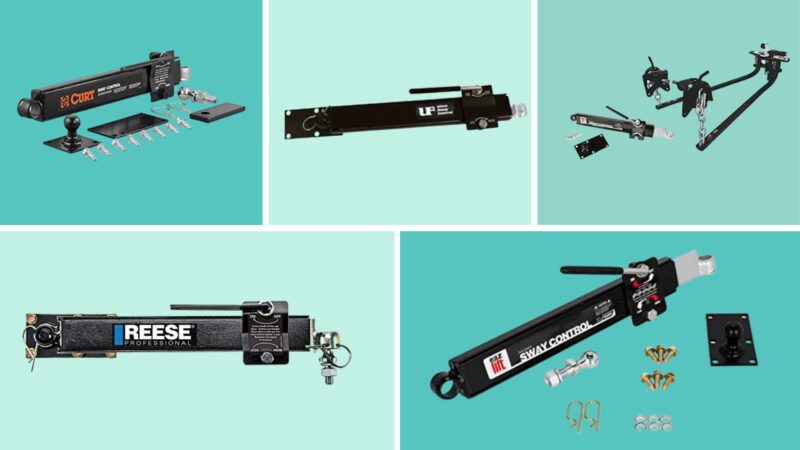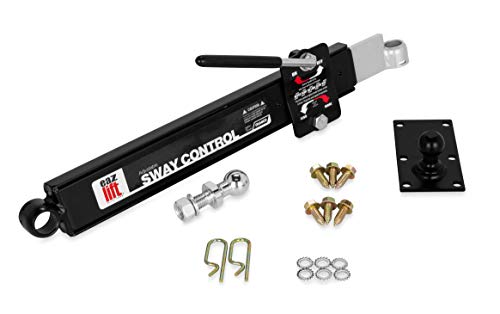Table of Contents Show
One of most drivers’ greatest fears when towing a travel trailer is sway. Sometimes it’s unavoidable, and sway can prevent someone from taking the plunge and hitting the road. However, with anti-sway bars, drivers can plan adventures with confidence.
But do you need sway bars for a small camper? They don’t have problems with sway, do they? Every sized travel trailer will experience some sway. Wind gusts or drafts from passing semi-trucks can push any trailer to the side. Let’s look more at why you should consider installing sway bars on your camper.
Why Do Campers Sway?
Campers sway while turning. This is why drivers need to slow down when rounding a curve or turning at a traffic light. Turning too quickly shifts the weight inside the camper and can cause sway. This shift is why semi-truck drivers slow down far before an off-ramp with a curve.
Wind also causes campers to sway. The wind is out of the driver’s control. Whether it’s gusty conditions or strong drafts coming off passing semi-trucks, an RV will blow around as the wind pushes against it. You see warnings on tall bridges for “high winds” and receive weather alerts for high-profile vehicles during highly windy conditions. It’s hazardous when an RV starts swaying and the driver can’t control it.
Sometimes RVs sway because the driver is going too fast. The faster you drive, the less control you have over the towing vehicle. Overcorrecting a camper can lead to rollovers and risky situations.
RVs also sway because they aren’t loaded properly. If you put too much weight in the rear or on one side of the camper, this increases sway. Always store more weight toward the front of a towable RV and evenly distribute the weight from one side to another.
What Are Sway Bars?
Even though factories don’t install sway bars on campers, you can quickly get after-market kits. Anti-sway bar kits attach the trailer frame to the ball mount and keep the camper from fishtailing. Even the slightest winds will cause a camper to sway from side to side. Without the aid of these bars, the trailer can swing out of control. This swinging can lead to accidents and rollovers. Anti-sway bars or friction control bars are worth the investment to provide better handling while driving.
Do You Need Sway Bars for a Small Camper?
Sway bars aren’t a requirement on RVs, but they make a significant difference. No one wants to white-knuckle it through windy conditions. Even a tiny camper can sway and cause unnecessary stress on the driver.
If you’re on a budget, you can find an anti-sway bar kit for under $100. If you can afford it, high-quality kits are available for $200-400. They’re well worth the investment to give yourself more peace of mind and the protection you need from winds and drafts.

Do Anti-Sway Hitches Work?
If you drive in extreme conditions with high wind gusts, no anti-sway bar kit will give you the protection you need. It’s best to pull off the side of the road or not venture out at all. However, in normal conditions, these kits help level the wheels of your camper when it starts swaying due to windy conditions. This reduces the rocking motion and prevents fishtailing.
For smaller campers, some kits provide friction control. These minimize sway once it has already happened rather than preventing it. Some anti-sway bar kits have an on-off handle. This is crucial because you don’t want to engage the anti-sway brake in icy conditions.
Keep in Mind: Wondering if squaredrop campers are better than teardrop campers? Here’s your answer!
The Best Sway Bars for Your Camper
There are several options for anti-sway bars for your small camper. Driving a lightweight, shorter trailer, you might get by with one anti-sway bar or friction control bar. If you prefer to have better control, the EAZ LIFT elite kit is the best option.
Best: EAZ LIFT Elite Kit
EAZ LIFT is the first patented weight distributing system in North America, dating over 50 years ago. This kit contains hookup brackets, spring bars, chains, 2-5/16″ hitch ball and ball mount, shank hitch pin, and clip and bolt package for adjustable hitches. The spring bars are chrome molybdenum-grade steel, making them top-quality in durability and strength.
Rated to tow a maximum weight of 12,000lbs and a maximum tongue weight of 1,200lbs, this EAZ LIFT kit is easy to install because of the pre-installed U-bolts and chain package. It’s the only anti-sway bar kit on this list with two spring bars. It has 4.7/5 stars by reviewers.
- Weight Distribution Hitch Kit: Designed to provide trailers with a safer, smoother ride
- External/Adjustable Sway Control: The sway control is manually adjusted to your desired amount with a simple clamp...
Runner Up: CURT Trailer Anti-Sway Bar Control Kit
For RVers on a budget who want a name-brand kit, this Curt anti-sway bar kit provides stability and control at a fraction of the cost. It easily adjusts for different trailer types and load sizes, and the set-up is simple with the on-off handle, making it convenient to engage or disengage the sway control whenever needed.
Limit the lateral movement of your trailer by using this kit in combination with a weight-distribution hitch or with a sway control ball mount. This Curt anti-sway bar kit measures 20.125” in length and 4.125” in height. Only one anti-sway bar comes in the package, so if you want a bar for each hitch side, you’ll want to order two. It has a rating of 4.7/5 stars by reviewers.
Keep in Mind: Is an equalizer hitch really worth it? Let’s find out!
- IMPROVED CONTROL. This trailer sway control kit helps limit your trailer’s lateral movement, using a brake pad type...
- VERSATILE. This trailer sway bar is compatible with a wide variety of weight distribution hitches, including almost all...
Budget Option: Ultra-Fab Ultra Sway Control
Another budget-friendly option for those looking for sway bars for a small camper is the Ultra-Fab kit. Like the Curt kit above, only one anti-sway bar comes in the package. This option features an adjustable E-Z quick release lever and is convenient to attach to the trailer frame and ball mount. The manufacturer also provides a three-year warranty. The bar measures 19.47” x 8.38” x 4.22” and weighs less than five pounds. It has 4.5/5 stars by reviewers.
- With the fully adjustable E-Z Quick Release Lever
- Resists sway and fishtailing caused by wind or other vehicles
Easy Install: Pro Series Value Friction Sway Control
Reviewers rave about how manageable it is to install this Pro Series anti-sway bar. In less than 30 minutes, you can adequately attach this to your trailer frame and ball mount and get on the road. In addition to this sway bar is the friction control.
When you test drive it, you can incrementally increase the friction brake every few miles until the trailer sway is where you want it. The heavy construction enables durability and reliability. Like the Curt and Ultra-Fab options, this Pro Series unit one comes with one bar per package. It has a rating of 4.7/5 stars by reviewers.
- Compatible with all Class III and IV hitches, Installs and removes easily.Fit Type: Universal Fit
- Not for use with surge breaks, Only use with A and C Trailer Tongues
Passenger Side Mounted: EAZ LIFT Screw-On Sway Control
For a right-mounted anti-sway bar, EAZ LIFT provides another option. With heavy-duty steel, this anti-sway bar features a friction brake like the Pro Series option above. The on-off handle makes it straightforward to engage or disengage the sway control. It is essential when traveling in icy conditions. This passenger-side mounted bar is compatible with EAZ LIFT weight distribution hitches. It’s an excellent choice if you need sway bars for a small camper, and has 4.6/5 stars by reviewers.
- Provides Safer, Easier Towing: Helps minimize sway caused from passing trucks and sudden wind gusts; Adjustable Sway...
- Compatibility: Compatible with Eaz-Lift weight distribution hitches with adjustable sway control; For use on the right,...
How Do I Stop My Trailer From Fishtailing?
Even the best and safest drivers can lose control with a sudden gust of wind. If your trailer starts fishtailing, activate the manual brake control override or the trailer brakes. Lift your foot off the accelerator, but don’t press the brake pedal. Pressing the brake pedal will make the fishtailing worse. Firmly grip the steering wheel and allow the trailer to correct itself as you gently slow down. Find somewhere safe to pull off and check the hitch. You might want to also check inside the trailer to ensure the weight is still even.

Travel Safe With Sway Bars
Do you need sway bars for a small camper? It’s not necessary, but we highly encourage it. No matter what size camper you have, installing sway bars will make a difference. Why not spend a little money to make your driving experience more enjoyable and safer for everyone?
Have you installed anti-sway bars on your travel trailer? If so, have you noticed a difference in the handling?
Last update on 2024-07-26 / Affiliate links / Images from Amazon Product Advertising API












We’ve been camping since 1990. We took on a family of six foster children in order to keep them together. Loving to travel, motels would have been too expensive so we looked at camping.
Now, I’m retired Army and my new wife, in 1989 talked me into tent camping around Washington DC in July. I didn’t like camping anyway but aquiessed to my new wife’s request. That’ll never happen again!
So, we ended up buying a 19 foot travel trailer that would sleep eight and seat 12, tightly. I knew nothing about sway control and no one told me about it.
We took a few short trips with the fresh water tank full since we were dry camping. I might note that the fresh water tank was under the front left side of the camper. We had no problems with sway. We were pulling the camper with a conversion van in order to hold all of us.
We then decided to take a trip from Columbus Oh. to South Florida. We loaded the camper and van with everyone and took off. I also left the fresh water tank empty in order to save weight. That was to be our undoing.
Coming out of Cincinnati into Kentucky there is a large hill to climb. We were partially passed by a big truck on the left side as another started passing us on the right. That set up the (almost) impossible to recover monster sway. Thc camper started gyrating from side to side violently as the camper threw the van in wild gyrations in the opposite direction. Since I’m pretty laid back, I almost totally panicked. However, I had the presence of mind to remember something I read about sway. It was to floor the accelerator and hit the trailer brakes as hard as humanly possible.
That stopped the gyrations and I pulled to the side of the road followed by a tow truck. The driver told me that he thought we were gone and that he had never seen anyone recover from from a situation that bad. I was shaking, the kids were screaming but we saved everyone and everything. No soiled pants to worry about.
For the rest of the trip we never got over 55 miles an hour and had no more problems with sway.
Needless to say a new sway control was installed before the camper went out again.
One thing I must disagree with is: I drove a big truck (18wheeler) starting a couple of years after that and after a year of hauling campers. I must disagree with the sway of a 53 foot trailer swaying on a curve or in high winds. I never slowed down for sway. I never felt it or heard of it. Yes, I always slowed way down while taking an off ramp, especially one with a curve in it. That was due to the probability that if I took the curve too fast, the load could shift or the center of gravity of the trailer would shift and turn the truck over. People see trailers on their side on a curved off ramp. It’s generally due to taking the turn too fast and something shifting.